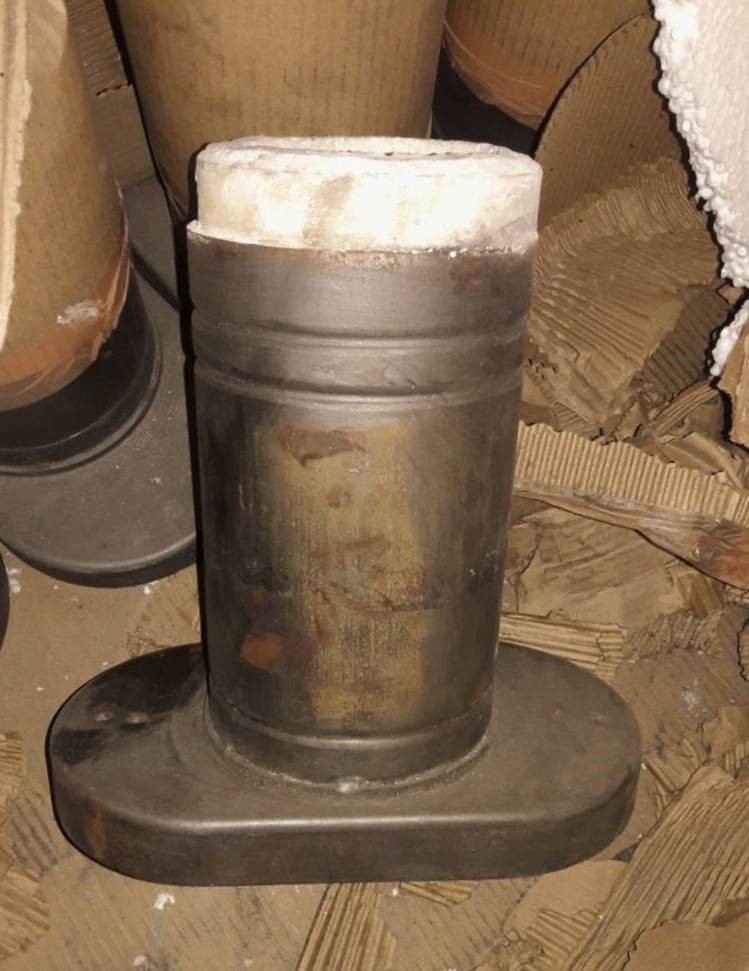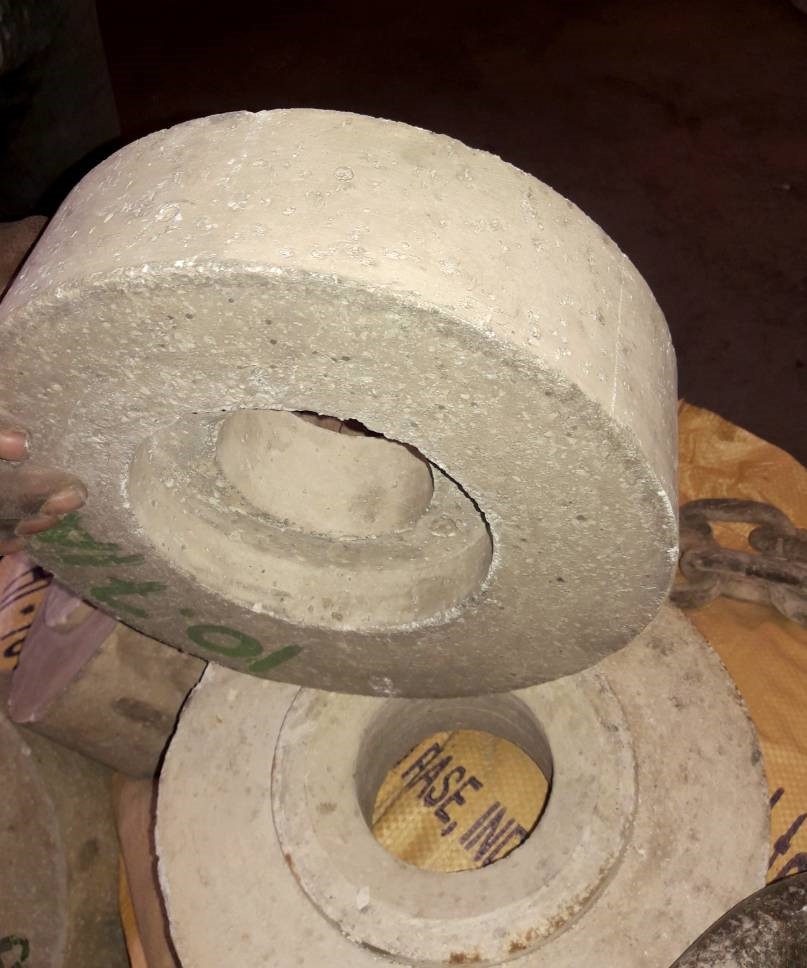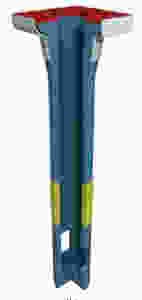The MTNP is an extended slide gate top plate that is installed in the tundish, and the MTSP is a lower piece that is attached to the bottom of the top piece using an exterior flange. MTSP’s and MTNP’s are typically assembled in such a way that each has a flat plate that matches with its partner piece, forming a “gas-tight” joint around the aligned bores.
These modifications are brought about to reduce the number of joints and establish a more perfect gas-tight situation. Despite all the improvements made to design, maintaining a complete airtight condition becomes difficult due to many reasons such as the distortion of the flatness of the plates at high temperatures as they undergo a tremendous thermal cycle during their operation if not restrained correctly. By utilizing an intumescent material, any spaces formed, between the plates at a high temperature can be filled by the material as the space forms and the intumescent material expands. As a result, the spaces formed at high temperature remain filled and air aspiration is prevented. The intumescent material of choice utilizes expandable graphite and the evolution from platelet structure to a worm-like structure through expansion is observed.
However, the material should only expand once it is in the casting position under the tundish and not during off-line pre-heat. It should also be able to reduce the oxygen pickup in the steel by partially reacting with incoming oxygen thereby reducing oxygen ingress. At the same time the coating should also protect the MTSP and MTNP plate surfaces from oxidation. The material must be able to be applied as a smooth coating and must not stick during the firing of the SEN in and out of the mechanism. It should ideally lubricate the plates reducing friction forces and torsional stress on the ceramic pieces. Moreover, it must not prevent the SEN from being fired out of the mechanism and get replaced by another tube or, in case of emergency, a blank plate to prevent further steel flow.
Monoblock tundish nozzle plate
The monoblock stopper plate was developed to minimize the number of joints in the system and in the process prevent air aspiration. The slide gate top plate is extended to form a monoblock plate thereby eliminating the use of the top upper nozzle. A top sleeve is placed on the top of the extended slide gate top plate. The use of well block is also not required for these types of systems.

Key features:
It has no joints between the upper tundish nozzle and the top plate which eliminates air infiltration and helps in reducing the chances of steel reoxidation, macro inclusions formation, and clogging of nozzles.
Advantages:

1. The use of the upper tundish nozzle is eliminated.
2. The use of well block is not required.
3. Air aspiration chances are further reduced.
4. Leakage of metal or chance of mechanism breakout is reduced.
5. hassles of preparation are reduced.
Monoblock tundish shroud plate
The monoblock tundish shroud plate forms the basis for the tube changer mechanism. The bottom plate is a monoblock nozzle with upper plate fixed on it. The bottom plate is essentially the moving plate which controls the flow of metal from the tundish. The centering of the nozzle can get disturbed as the nozzle moves along the centreline and thus such type of system is only used in slab caster and not preferred in smaller cross sections or billet caster.MTSPs are changeable, which helps to prolong the tundish sequence and alignment of the nozzle in the mold can be improved as it is mechanically controlled by the system, ensuring reproducibility. To take care of the emergency situation, a safety blank plate is held in the system in an ready to fire position which can arrest steel flow immediately.



